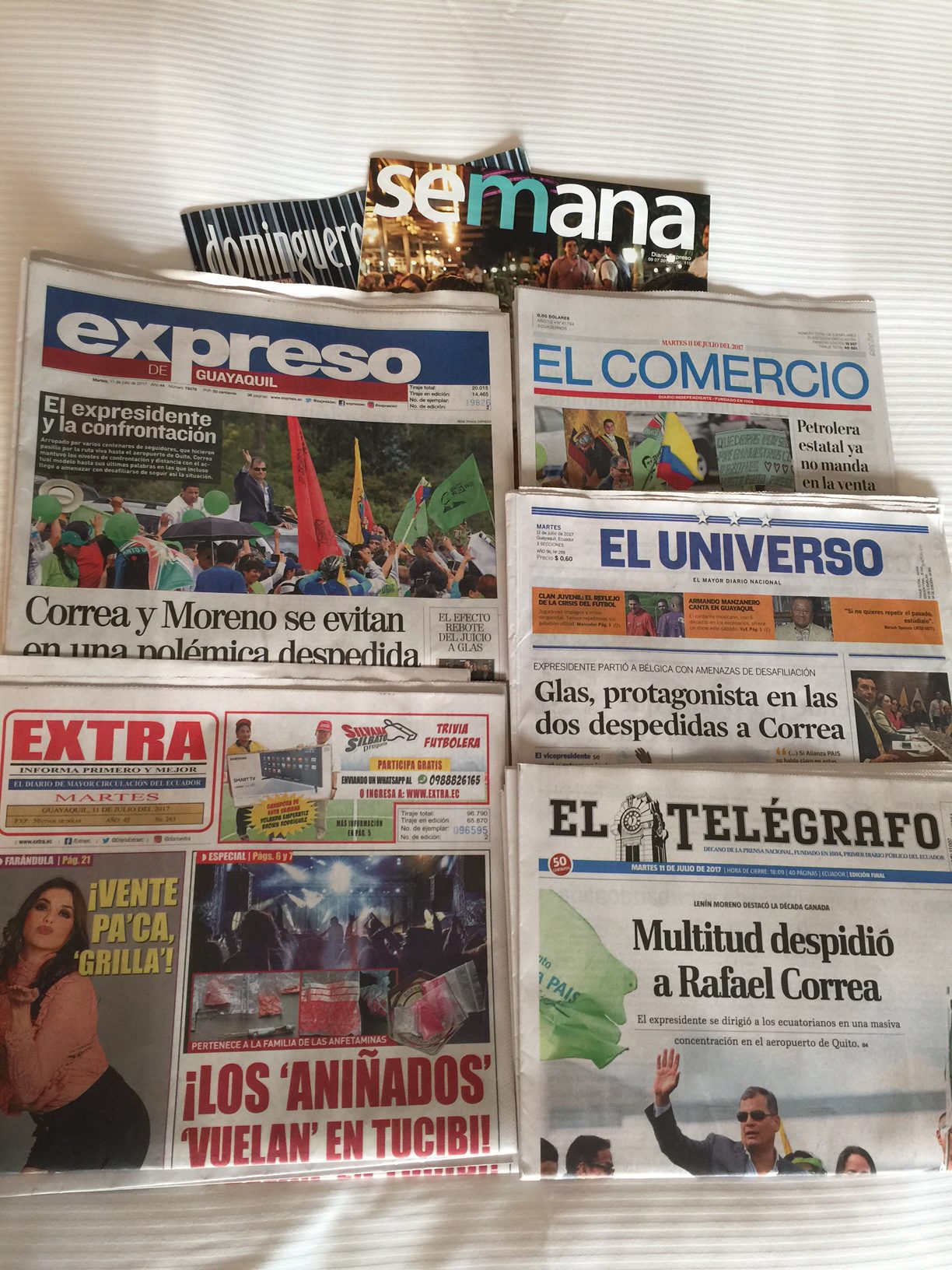Guayaquil, Ecuador —
It’s been 24 years since I last visited Ecuador, a beautiful country where I have been honored to work with such national titles as Quito’s El Comercio, Guayaquil’s El Universo, as well as the weekly magazine Vistazo. Much has happened since those visits, and these titles now display a design that reflects the changes that newspapers everywhere have faced.
Yet, in Ecuador, I am told repeatedly, printed newspapers still carry weight as opinion leaders. “While the kids in the house may not touch them, the parents will still subscribe to at least one printed newspaper,” said Ricardo Arques, Vice president for Editorial Development, Graficos Nacionales, S.A., which publish both Expresso and Extra, the two newspapers that I am visiting here this time. Expresso has the largest circulation of any Ecuadorean newspaper. Extra is the popular audience tabloid, but with a standard size front page that folds over it!
While print may still be king, my workshops here are aimed at imparting lessons for visual storytelling in the digital age. The editors are aware that the reign of print may not be forever, even here. “We still have problems with Internet speed here,” says Dr. Galo Martinez, editor of Expresso/Extra. “It’s very slow to download videos and heavy documents, and many people are not paying for monthly subscriptions to the Internet. They charge their phones the way we buy bread or other perishables on a daily basis.”
Here are the various newspapers that compete for the attention of readers in Ecuador daily, including El Telegrafo, which is a government-subsidized newspaper.
